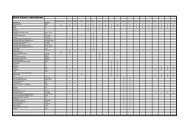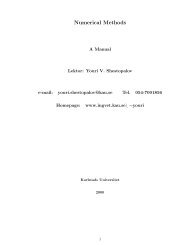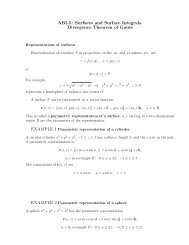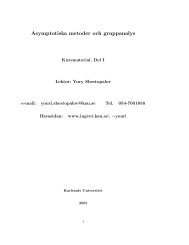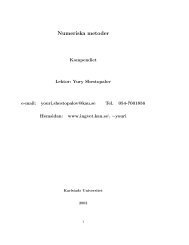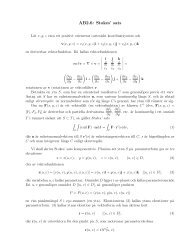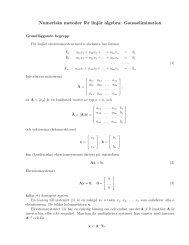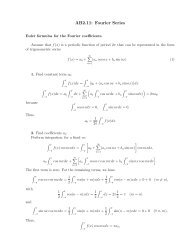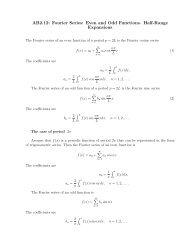Create successful ePaper yourself
Turn your PDF publications into a flip-book with our unique Google optimized e-Paper software.
In particular, if λ is a regular value, then the homogeneous Fredholm IE (124)has only the zero solution φ(x) = 0.∫ bφ(x) − λ K(x, y)φ(y)dy = 0 (126)a9 IEs with degenerate and separable kernels9.1 Solution of IEs with degenerate and separable kernelsAn IEwith a degenerate kernel∫ bφ(x) − λ K(x, y)φ(y)dy = f(x) (127)an∑K(x, y) = a i (x)b i (y) (128)i=1can be represented, by changing the order of summation and integration, in the formφ(x) − λn∑i=1∫ ba i (x) b i (y)φ(y)dy = f(x). (129)aHere one may assume that functions a i (x) (and b i (y) ) are linearly independent (otherwise, thenumer of terms in (128)) can be reduced).It is easy to solve such IEs with degenerate and separable kernels. Denotec i =which are unknown constants. Equation (129)) becomes∫ bab i (y)φ(y)dy, (130)n∑φ(x) = f(x) + λ c i a i (x), (131)i=1and the problem reduces to the determination of unknowns c i . To this end, substitute (131)into equation (129) to obtain, after simple algebra,{n∑∫ [] }bn∑a i (x) c i − b i (y) f(y) + λ c k a k (y) dy = 0. (132)i=1ak=1Since functions a i (x) are linearly independent, equality (132) yields∫ []bn∑c i − b i (y) f(y) + λ c k a k (y) dy = 0, i = 1, 2, . . . n. (133)ak=127



